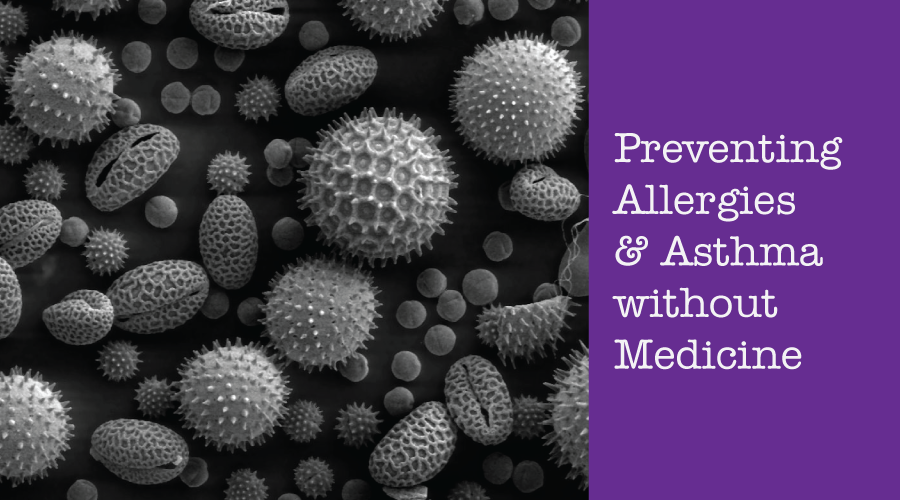Preventing Allergies and Asthma without Medicine
Allergies and asthma are inflammatory conditions usually triggered by air- or food-borne pollens and chemicals called allergens. Allergens are absorbed into the blood (through the lungs, skin, or intestines), and cause the white blood cells of allergy-sufferers to produce billions of molecules of the allergic antibody IgE. The IgE molecules travel through the bloodstream until they combine with mast cells or basophils. Mast cells (which line many blood vessels) and basophils (a type of white blood cell in the bloodstream) are the main storage sites for histamine and serotonin. The IgE allergic antibody then causes the cell membranes of the mast cells/basophils to become leaky and allow the storage load of histamine and serotonin to pour into the surrounding blood and tissues. The IgE-released histamine and serotonin then produce the familiar allergic symptoms of runny and swollen nose, blocked sinuses, itchy eyes, skin blotches and/or hives, coughing and wheezing, etc.
Asthma is an allergic inflammation involving the lungs. During an asthma attack (which can be triggered by air- or food-borne pollen, dust, animal hair, chemicals, etc.), the millions of tiny air sacs within the lungs are constricted, seriously impairing breathing and causing a feeling of tightness in the chest.
 Common Medicine for Allergies and Asthma
Common Medicine for Allergies and Asthma
Allergy medications will not cure your allergies. They work to prevent or to relieve symptoms of an allergic reaction. Sometimes, you need to take more than one kind of allergy medicine to control all of your allergy symptoms. For instance, you may need both an antihistamine and a decongestant. Sometimes, the allergy medications themselves will be a combination of more than one kind of allergy medicine.
Many of these allergy medicines are available over the counter (OTC). There are also allergy medications that are available by prescription only.
Common medications used: antihistamines, decongestants, steroid sprays, and new class drugs like Singulair.Continue reading



